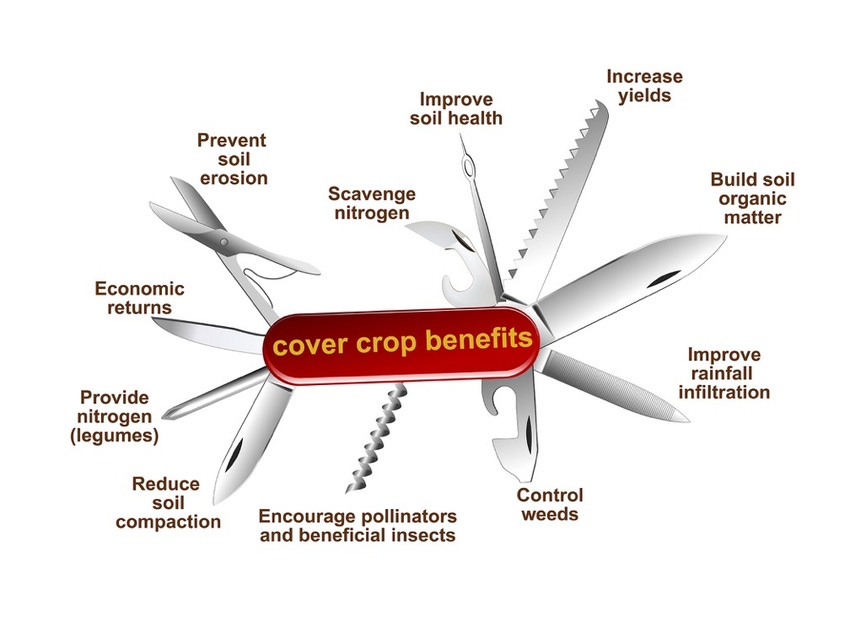August 4, 2017

As this issue hits your mailbox in mid-August, I’m sure most of you are sizing up potential bushels per field, and maybe not the health of your soil – but perhaps both, I hope, as you gear up to seed cover crops.
As a journalist, I’ve grown weary of the fake news label being thrown about with little regard for facts. Proven facts are facts, not fake. Just like cover crop science leading to improved soil health. More research, more data, and more farmers are proving how cover crops are building soil health – note the knife graphic that highlights research-proven benefits.
A yet-to-be-released CTIC/SARE/ASTA annual cover crop survey shows 54% of cover crop users see soil health benefits in less that 2 years, plus an additional 21% see benefits in 2-3 years. That’s an impressive 75% of 1,595 farmers who responded to survey. Another benefit worth noting is cereal rye as cover crop improved herbicide-resistant weed control always (25%) or sometimes (44%), with cover crop mixes and annual ryegrass providing even better control.
After attending the recent Soil Health Institute annual meeting (see “Power up your soils” on our website), I’m excited by their soon-to-be-released initial set of soil health measurements. Working with farmers, researchers, field conservationists, soil test labs and many others over three years, the Soil Health Institute is leading the charge to herd these cats and define initial soil health measurement standards by region.
I applaud SHI and everyone involved, as this is a great and important step to gain broader investment in soil-health-promoting practices that deliver both short- and long-term benefits. And more measurements will follow as research proves how to help suppress diseases, improve water quality, build drought resistance, increase carbon sequestration and reduce greenhouse gas emissions.
It will truly be a real game changer for U.S. agriculture when adoption increases. Just ask Maryland farmers, who have now hit the 50% mark of total acres with cover crops. We hope our efforts to showcase farmers who are improving soil health is inspiring.
I sincerely thank you for reading, for viewing more valuable content on csdigest.com, for subscribing to our newsletters, and for being willing to Think Different.
About the Author(s)
You May Also Like






